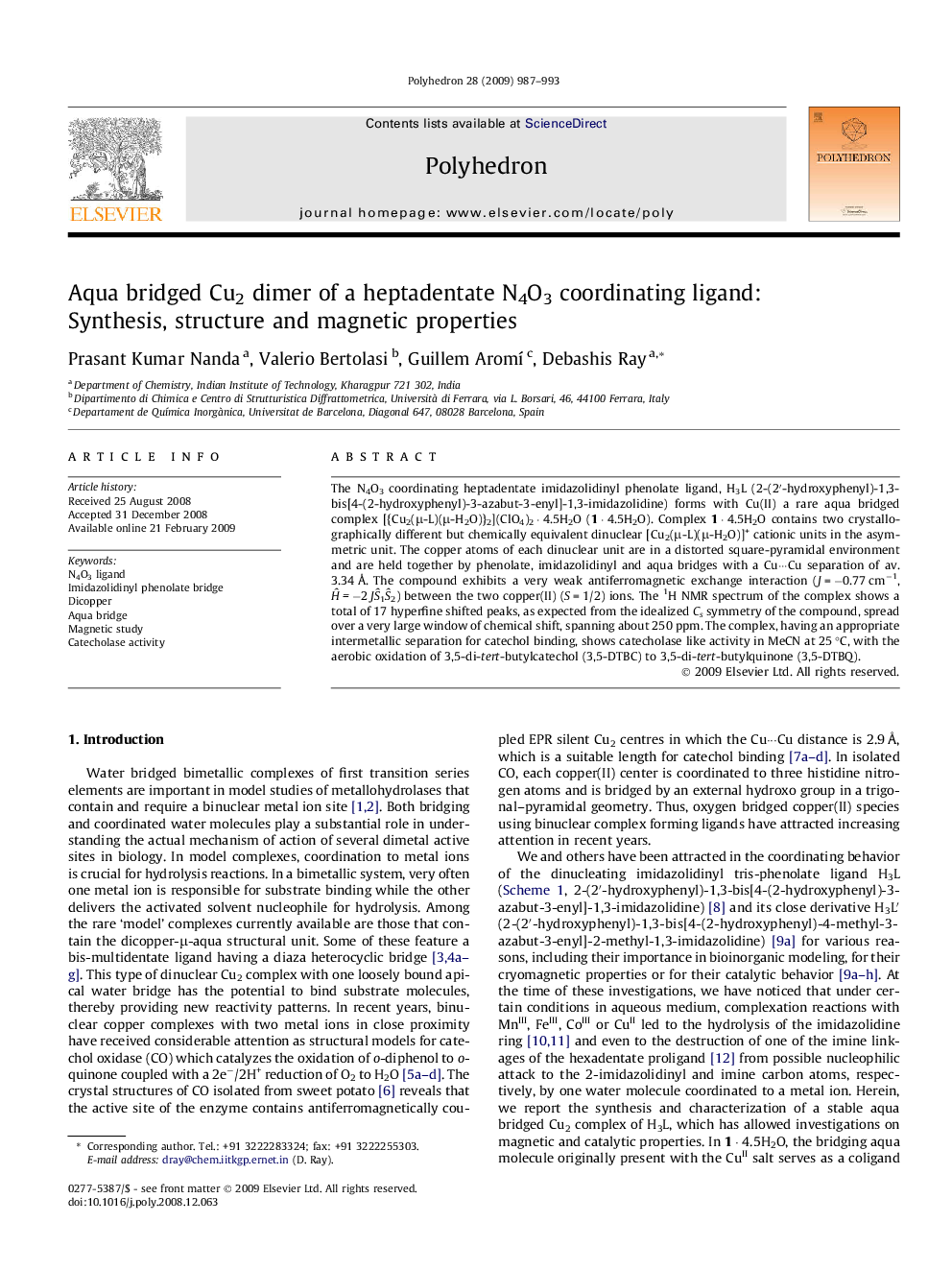| Article ID | Journal | Published Year | Pages | File Type |
|---|---|---|---|---|
| 1339075 | Polyhedron | 2009 | 7 Pages |
The N4O3 coordinating heptadentate imidazolidinyl phenolate ligand, H3L (2-(2′-hydroxyphenyl)-1,3-bis[4-(2-hydroxyphenyl)-3-azabut-3-enyl]-1,3-imidazolidine) forms with Cu(II) a rare aqua bridged complex [{Cu2(μ-L)(μ-H2O)}2](ClO4)2 · 4.5H2O (1 · 4.5H2O). Complex 1 · 4.5H2O contains two crystallographically different but chemically equivalent dinuclear [Cu2(μ-L)(μ-H2O)]+ cationic units in the asymmetric unit. The copper atoms of each dinuclear unit are in a distorted square-pyramidal environment and are held together by phenolate, imidazolidinyl and aqua bridges with a Cu···Cu separation of av. 3.34 Å. The compound exhibits a very weak antiferromagnetic exchange interaction (J = −0.77 cm−1, Ĥ = −2 JŜ1Ŝ2) between the two copper(II) (S = 1/2) ions. The 1H NMR spectrum of the complex shows a total of 17 hyperfine shifted peaks, as expected from the idealized Cs symmetry of the compound, spread over a very large window of chemical shift, spanning about 250 ppm. The complex, having an appropriate intermetallic separation for catechol binding, shows catecholase like activity in MeCN at 25 °C, with the aerobic oxidation of 3,5-di-tert-butylcatechol (3,5-DTBC) to 3,5-di-tert-butylquinone (3,5-DTBQ).
Graphical abstractThe catechol binding and its oxidation in air have been examined for an aqua and imidazolidinyl phenolate bridged Cu2 complex with an intermetallic separation of 3.34 Å and exhibiting a very weak antiferromagnetic exchange interaction (J = −0.77 cm−1).Figure optionsDownload full-size imageDownload as PowerPoint slide
